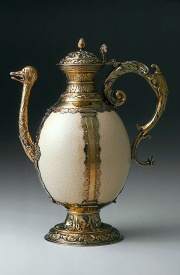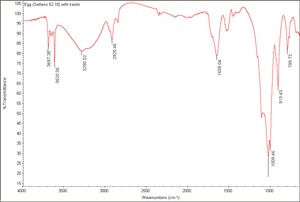Egg
Description
A term whose primary meaning in art, refers to the ellipsoidal shell and embryonic contents produced by birds. For paintings, the egg contents are used as a tempera medium. The whole egg, yolk, or white may be used sometimes mixed with oil and/or resin. The Egg yolk is a stable emulsion of an aqueous liquid with an oily, proteinaceous medium which dries quickly into a hard, insoluble film. Egg white, or glair, has been used as a medium for illuminated manuscripts. It is also used as a size for attaching Gold leaf. Albumen is the adhesive substance of egg white. As a pure film, albumen is clear, brittle, and water soluble. Water solubility can be decreased by heating or adding Tannin. The exterior of a bird egg is covered with a brittle shell composed of Keratin and Calcite.
Synonyms and Related Terms
Ei (Deut.); huevo (Esp.); œuf (Fr.); uovo (It.); ei (Ned.); jajo (Po.); ovo (Port.); ägg (Sven.)
Physical and Chemical Properties
- Miscible with water when fresh.
- Insoluble in water after heating.
Resources and Citations
- R. J. Gettens, G.L. Stout, Painting Materials, A Short Encyclopaedia, Dover Publications, New York, 1966
- Ralph Mayer, A Dictionary of Art Terms and Techniques, Harper and Row Publishers, New York, 1969 (also 1945 printing)
- John S. Mills, Raymond White, The Organic Chemistry of Museum Objects, Butterworth Heineman, London, 2nd ed., 1994
- Wikipedia: Bird Egg (Accessed Nov. 2, 2005 and March 2025)
- Van Nostrand's Scientific Encyclopedia, Douglas M. Considine (ed.), Van Nostrand Reinhold, New York, 1976
- The American Heritage Dictionary or Encarta, via Microsoft Bookshelf 98, Microsoft Corp., 1998

